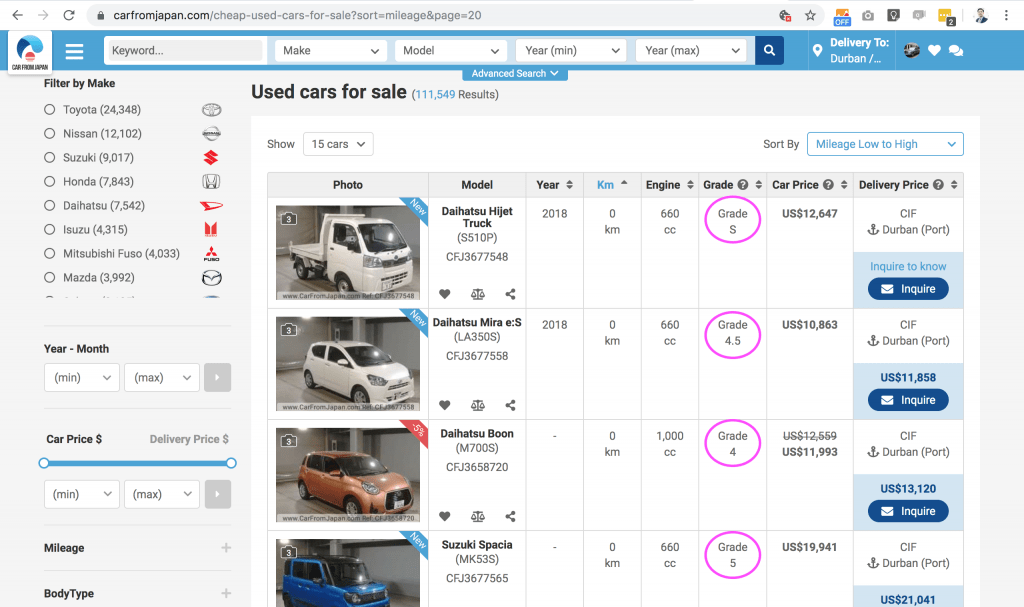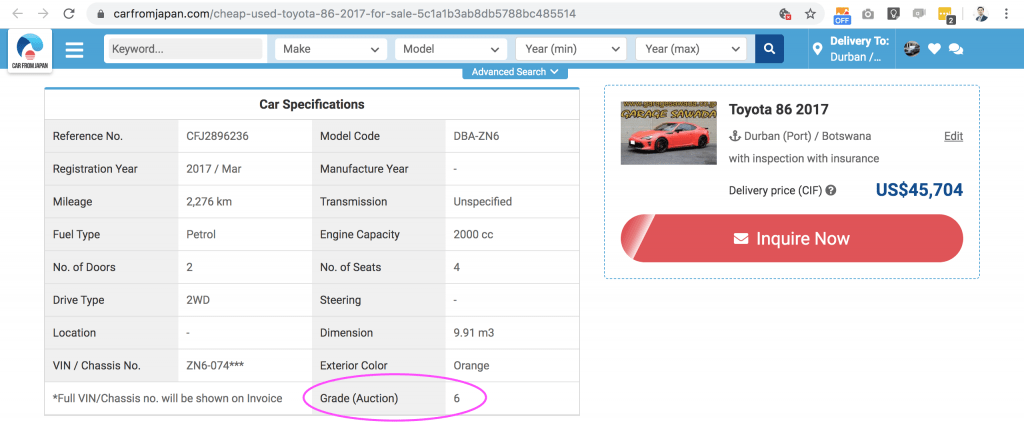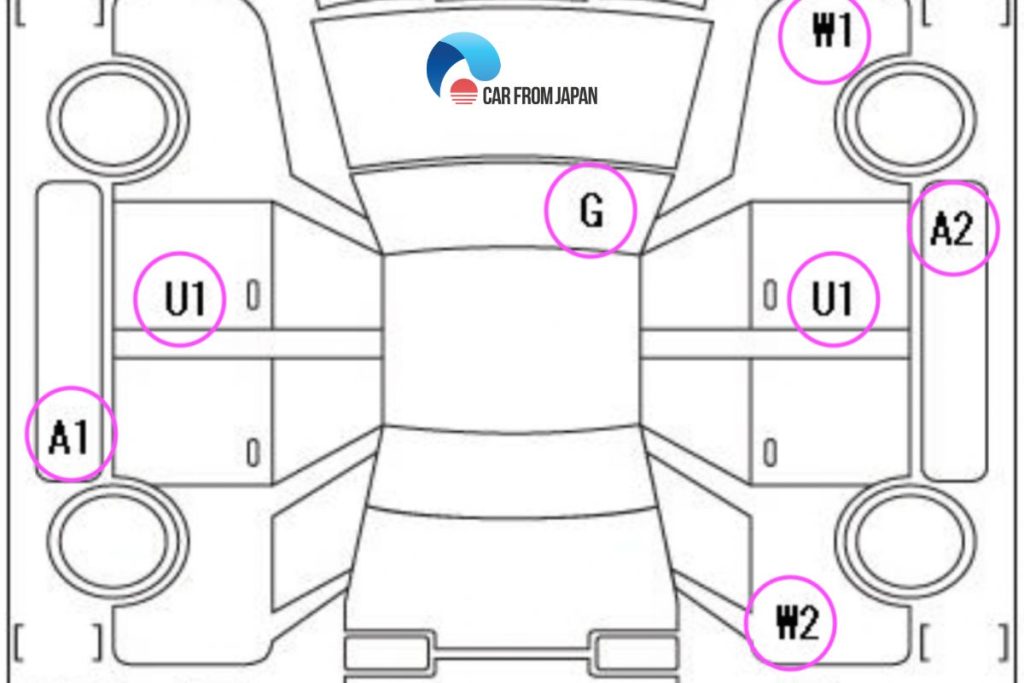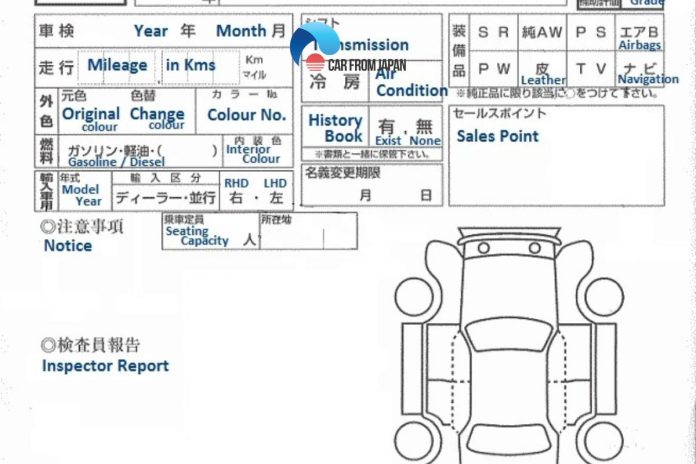Japanese auction sheets and inspection reports contain a wealth of information about used vehicles.
However, language barriers and unfamiliar terminology can hold you back from getting the used car you want. But how to read a Japanese auction sheet and inspection reports? This guide will break down the key elements, helping you accurately assess condition, history, and value.
How To Read A Japanese Auction Sheet
Used car Auction grade is the overall assessment of a car given by the Japanese car auction house’s inspectors. There are currently over 115 auction house locations that test and provide auction grades based on the general condition of the car or vehicle. Though different houses have various methods of determining each grade; the systems are likely similar and give the almost same result.
The grades are usually shown as numbers or letters for the overall grade based on the visible and mechanical condition. Some auctions use Letters –A, B, C, D, or E to describe the exterior and/or interior condition of the car, in addition to the overall grade, where A>B>C>D>E.
You can check out our below video for the full beginner’s guide here:
Overall Grade
- Grade 6 or higher or “S”: Considered as brand new, less than 12 months old, and/or with under 10,000km.
- Grade 5: As good as new, with exceptionally low mileage
- Grade 4.5: Very slightly used, mileage of up to 100,000km.
- Grade 4: Used with the slightest visible flaws.
- Grade 3.5: Good condition with visible flaws.
- Grade 3: Average condition with light damages.
- Grade 2 or 1: Poor condition with significant damages, but the car is functional.
- Grade R or RA: R stands for vehicles with repair history or major modification. RA is for minor accident cars that have been fully repaired.
You can find the auction grade in the places, shown in the below pictures.


Interior or Exterior Grade
The used car auction grade for the interior/exterior is as follows:
Interior grading:
- A – New vehicle’s condition.
- B – The car is in good condition, and the interior looks nice and tidy.
- C – Small food stains or cigarette holes could be found inside the car.
- D – Inner vehicle consists of cigarette marks, stains, tears, or smells.
- E – The Interior of the car is in bad condition. Grade E means all mentioned above and even worse.
Exterior grading:
- A – A pristine exterior condition.
- B – Some small scratches up to 15cm could be found.
- C – Scratches up to 30 cm or dents could be seen.
- D – Visible scratches, rust, or corrosion are detected.
- E – The car is in bad shape. Rust, corrosion, and exterior breakdowns are plenty.
For Advanced-Level Buyers
If an auction sheet is available, you can know more about the car’s condition, using the below terms and the car inspection marking (image below), indicated by the inspectors.

A1: Small scratch
A2: Scratch
A3: Big scratch
B : Dent with scratch
E1: Few Dimples
E2: Several Dimples
E3: Many Dimples
U1: Small dent
U2: Dent
U3: Big dent
W1: Hardly detectable repair mark/wave
W2: Repair mark/wave
W3: Visible repair mark/wave
S1 : Rust
S2 : Heavy Rust
X : Must be replaced
XX: Replaced
B1: Distorted radiator back panel or core support
B2: Highly distorted radiator back panel or core support
Y1: Small crack or hole
Y2: Crack or hole
Y3: Big crack or hole
X1: Small windshield crack
R : Repaired windshield crack
RX: Repaired windshield crack (must be replaced)
X : Windshield crack (must be replaced)
G : Stone chip in glass
C1: Corrosion
C2: Heavy corrosion
P : Marked paint
H : Faded paint
FAQs
Why should I learn to read Japanese auction sheets and inspection reports?
Understanding these documents is crucial for making informed bidding decisions. They provide detailed information about a vehicle’s condition, history, and potential issues, helping you avoid costly surprises.
Are Japanese auction sheets and inspection reports available in English?
While some auction platforms offer English translations, it’s beneficial to learn the basics of the Japanese system for a more comprehensive understanding.
What are the key elements to look for on a Japanese auction sheet?
Pay attention to the vehicle grade, mileage, auction date, starting bid, and any notes or comments about the vehicle’s condition.
What does the Japanese auction grade system mean?
The grading system (e.g., 4.5, 3.0, etc.) indicates the overall condition of the vehicle, with higher numbers representing better condition.
Final Thoughts
This is necessary information for you to understand about your car before purchasing it. We hope this information serves you well in finding a good car from Japan. If you like the content or if you think this is good information, please leave a comment below and share this article with your friends. Have fun & good luck with your car hunt!




ハロー。
軽自動車を買うならとても役に立つホームページがあります。
それは無料で中古車探しのプロがおすすめの1台をアドバイスしてくれるものです。
とても評判でこのサービスを利用するか利用しないかで結果がかなり違うはずです。
中古車選びで迷いたくない人は必ず使いたいですね。